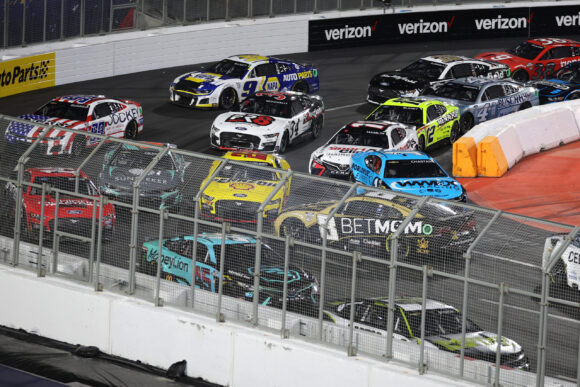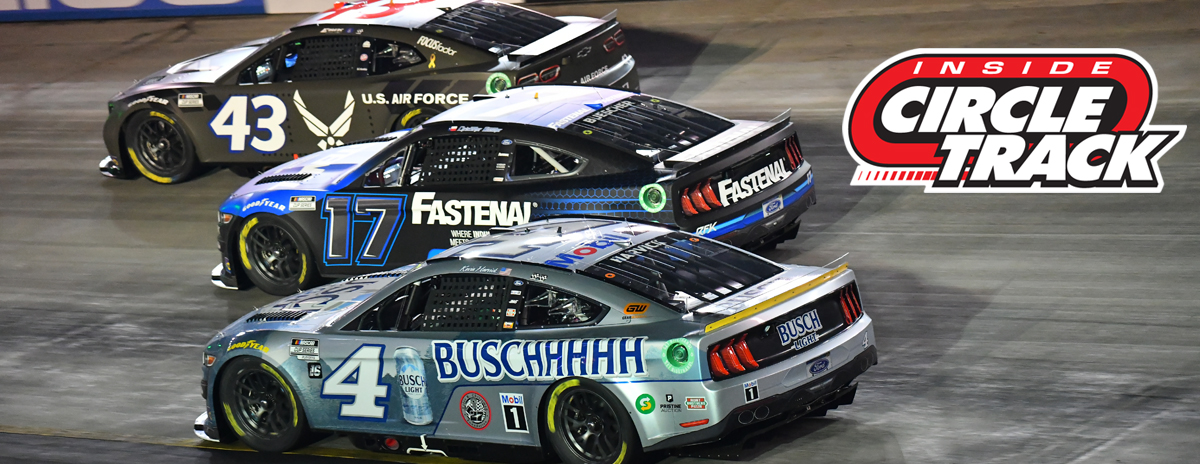
Observers saw plenty of this on Sunday night(Getty Images)
NASCAR ought to be applauded for reaching out to new audiences and finding new or renewed venues for that purpose. That said, it would seem unlikely that the second running of the Busch Light Clash at the L.A. Coliseum did very much to hook new fans. In the space of a few hours, what began as a sensation stirring spectacle devolved into a tiresome grind.
Sunday night began with some relatively entertaining heat races that featured many of the sights and sounds that a perspective new fan might find intriguing. Good competition, some fender rubbing, and even a dust up or two were all a part of the show. But it was after that when things went a bit off the rails.
Following four 25-lap heat races, there was no need for the last chance races to go on for 50 circuits each. I get the concept of B-main races being longer in distance than the heat races with the idea of giving drivers and teams who might’ve had a problem during their first preliminary every opportunity to make the feature but doubling the laps was overkill. It made the races too long. If any excitement was going to happen, it could have happened in 30 laps just as well as in 50.
But it was during the 150-lap main event that the show bogged down even for this life-long fan of the sport. For me, that race took on the character of the support class feature at a dirt track that is running right before the race everyone actually came to see. Caution after caution, often for single-car spins or for what began as a single-car spin that eventually entangled multiple cars, proved to be killjoys throughout the night.
A 150-lap race on a quarter-mile track took one hour and forty-three minutes to play out after a total of 16 yellow flags waved. Even for someone who has loved racing for as long as I can remember, that was too long and too tiresome. For someone new to the sport who was invited or tuned in to experience the sights and sounds of racing for the first time, the luster of the new spectacle no doubt wore off by the halfway point.
In comparison, the 2022 version of this race took 57 minutes and featured only five yellow flags.
Perhaps some who were there more for the entertainment aspect than the racing stayed with it past the halftime concert break but the rmon track action provided little reason to stay.
But the most disappointing aspect of how it played out to me wasn’t the size and shape of the track, or the broadcast, or a lack of competition. The thing that hurt the show most was the driving as these supposed “most talented drivers in the world” kept causing so many problems.
After weeks of promotion touting the ‘bump-and-run’ and fender banging, the race turned into a demonstration of drivers who got tapped on the rear bumper on one end of the track simply hauling it down the next straightaway and slamming into the back of the car that had moved them so hard that a spin or crash was bound to occur.
The bump-and-run can be entertaining to watch. The bump-and-crash becomes annoying after multiple times of seeing it happen. Why would anyone who was there or watching for the first time choose to go back or watch again after having to watch lap after lap of race cars following behind a pace vehicle?
Rules and other circumstances don’t wreck race cars, drivers do. And in the case of the Busch Light Clash, they did so frequently.
So what can be done if NASCAR goes back to the L.A. Coliseum or to some other similar venue for an exhibition race?
First of all, there were too many cars on the track during the main event. That track is too small and too tight for that much traffic. The heat races, which had fewer cars, were fairly entertaining. To reduce the number of cars in the primary show, there could be eliminations every few laps. For example, after 25 laps, the final three or five cars in the running order could be sent off the track. That could be done two or three times during the night until there were only 15 cars or so on the speedway.
Also, those drivers who blatantly cause a caution could be parked. While some might argue that a judgement call could cost a driver, the response could be- ‘Who cares? It’s an exhibition race.’
These sorts of events are supposed to be about entertainment. Endless laps under caution are not entertaining, just tiresome. That being said, it would be hard to imagine that race did anyone any good.
Please consider also reading:
Jimmie Johnson has much to learn going in to Cup Series return
Richard Allen has been covering NASCAR and other forms of motorsports since 2008.
Respond to this piece on Twitter –> @RichardAllenIDR
or on Facebook –> InsideCircleTrack/Facebook
